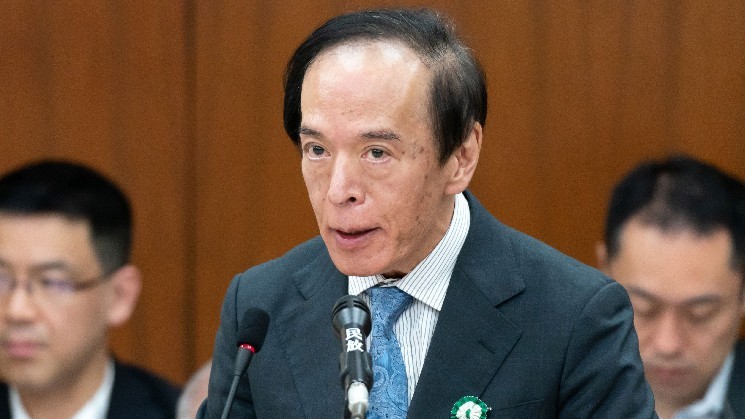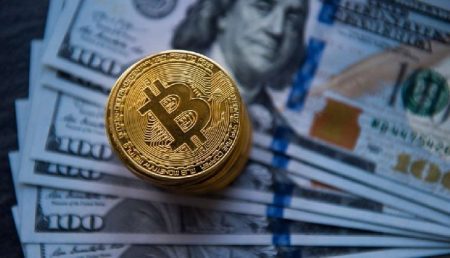Japan Set to Launch Blockchain-Based Yen as Interest Rate Hike Looms on Horizon
Revolutionary Digital Currency Development Coincides with Shifting Monetary Policy
In a significant financial technology breakthrough emerging from Japan, preparations are underway for the launch of a blockchain-based version of the Japanese yen—a development that could reshape how one of the world’s major currencies operates in the digital economy. This pioneering initiative arrives at a strategically opportune moment, as the Bank of Japan (BOJ) signals readiness to implement interest rate increases that financial analysts predict will enhance the appeal of both traditional yen assets and these new digital yen-backed instruments.
According to recent reporting by CoinDesk, Japan’s Financial Services Agency (FSA) is poised to approve the nation’s first yen-denominated stablecoin as early as autumn 2023. At the forefront of this initiative is Tokyo-based fintech enterprise JPYC, which plans to register as a money transfer business within the month, positioning itself to lead the introduction of a Japanese yen-pegged stablecoin. This digital asset will maintain a precise 1:1 ratio with the traditional Japanese currency, creating a blockchain-based alternative that preserves the yen’s value while offering the technological advantages of cryptocurrency infrastructure.
“This represents a watershed moment for Japan’s financial ecosystem,” explains a Tokyo-based financial analyst who specializes in digital currencies. “Introducing a yen-denominated stablecoin addresses a crucial market need while simultaneously demonstrating Japan’s commitment to embracing financial innovation within a regulated framework.”
The Strategic Role of Stablecoins in Japan’s Financial Ecosystem
Stablecoins serve as a critical bridge between traditional finance and the cryptocurrency sector by maintaining a consistent value pegged to established currencies like the dollar, euro, or yen. These digital tokens have become increasingly vital financial instruments, facilitating seamless capital transfers for trading activities, investment opportunities, international remittances, and cross-border payments—all while circumventing the price volatility that characterizes many other cryptocurrencies.
JPYC’s initiative faces emerging competition from established financial institutions recognizing the strategic importance of this technology. Last week, Tokyo-based Monex Group, a respected financial services company, revealed its own plans to develop a yen-pegged stablecoin specifically designed for international remittances and corporate settlements. Oki Matsumoto, Chairman of Monex Group, articulated the strategic imperative behind this decision when speaking to Japanese media: “Issuing stablecoins requires significant infrastructure and capital, but if we don’t handle them, we’ll be left behind.”
The race to establish yen-denominated stablecoins reflects broader recognition among Japanese financial institutions that blockchain-based payment systems will likely play an increasingly important role in global finance. By creating regulated, trusted digital versions of the yen, these organizations aim to ensure Japan maintains its position as a financial innovation leader while providing Japanese businesses and consumers with efficient tools for participating in the evolving digital economy.
Bank of Japan’s Monetary Policy Shift Creates Favorable Environment
The timing of these stablecoin developments coincides with a pivotal shift in Japan’s monetary policy landscape. Both prominent banking executives and market analysts anticipate the BOJ will implement interest rate increases in the coming months—a stark contrast to the expected direction of the U.S. Federal Reserve, which many predict will begin cutting rates.
Hiroshi Nakazawa, who leads Hokuhoku Financial Group (one of Japan’s largest regional banking institutions by assets), stated during a weekend interview that the BOJ could raise interest rates in either October or December, assuming “things go smoothly.” This assessment carries particular weight given Hokuhoku Financial Group’s market performance—its shares have surged 90% this year, outperforming all other banking stocks on the Topix banks index, which tracks 70 lending institutions.
This outlook aligns with broader market expectations regarding imminent rate adjustments. Bloomberg Economics analysts note that recent Tokyo inflation data has likely reinforced the BOJ’s confidence that consumer price momentum remains robust and on course to achieve its 2% target. Their analysis projects a 25 basis point rate increase at the central bank’s October meeting, continuing the gradual normalization of Japan’s monetary policy following earlier rate hikes—from 0.1% to 0.25% in July 2022, followed by another 25 basis point increase in January 2023.
Potential Financial Impact: Investment Flows and Market Dynamics
The anticipated rate hike could catalyze significant investor movement toward JPY-backed stablecoins, creating a parallel to what occurred during the Federal Reserve’s 2022 rate increase cycle, which temporarily boosted demand for USD-pegged stablecoins before the Terra ecosystem collapse in May 2022 dampened enthusiasm. Financial strategists suggest that rising yields on yen-denominated assets could make JPY stablecoins particularly attractive for yield-seeking investors and businesses engaged in Japan-related commerce.
This shifting monetary landscape has already triggered notable movements in Japanese government bond markets. Yields on longer-duration Japanese government bonds (JGBs)—representing the world’s third-largest government debt market after the United States and China—have climbed to multi-decade highs. The 30-year JGB yield recently surged beyond 3.2%, while the 10-year yield reached 1.64%, levels not witnessed since the 2008 financial crisis, according to TradingView data.
“The bond market is clearly pricing in expectations of sustained higher interest rates,” notes a senior fixed-income strategist at a major Japanese investment bank. “This represents a significant departure from Japan’s extended period of ultra-low rates and signals growing confidence in the economy’s inflationary trajectory.”
Currency Dynamics and Cryptocurrency Implications
Further enhancing the yen’s appeal is the narrowing differential between U.S. and Japanese 10-year bond yields, which has contracted to 2.62%—the smallest gap observed since August 2022. Since the USD/JPY exchange rate historically tracks this yield differential closely, regression analysis conducted by MacroMicro suggests the currency pair should trade around 144.43, compared to Friday’s approximate level of 147.00, indicating potential yen appreciation ahead.
This strengthening yen outlook, combined with anticipated interest rate increases, creates downward pressure on the BTC/JPY exchange rate. The cryptocurrency pair listed on bitFlyer has already declined 8% this month, reaching its lowest level since early July. This sell-off has created a classic double top bearish reversal pattern on daily price charts—a technical formation that often precedes further declines.
Technical analysts applying the measured move methodology suggest this double top breakdown could push prices toward approximately 14,922,907 JPY. This target, calculated by projecting the height between the pattern’s peaks and trough downward from the breakdown point, indicates potential continued weakness for bitcoin when valued in Japanese yen.
As Japan stands at the intersection of monetary policy normalization and financial technology innovation, the introduction of yen-denominated stablecoins represents more than just a new digital asset—it signals Japan’s commitment to maintaining relevance in a rapidly evolving global financial landscape. For investors, businesses, and financial institutions, this convergence of traditional monetary policy adjustments with cutting-edge blockchain implementation creates both challenges and opportunities that will likely reshape Japan’s financial ecosystem for years to come.













